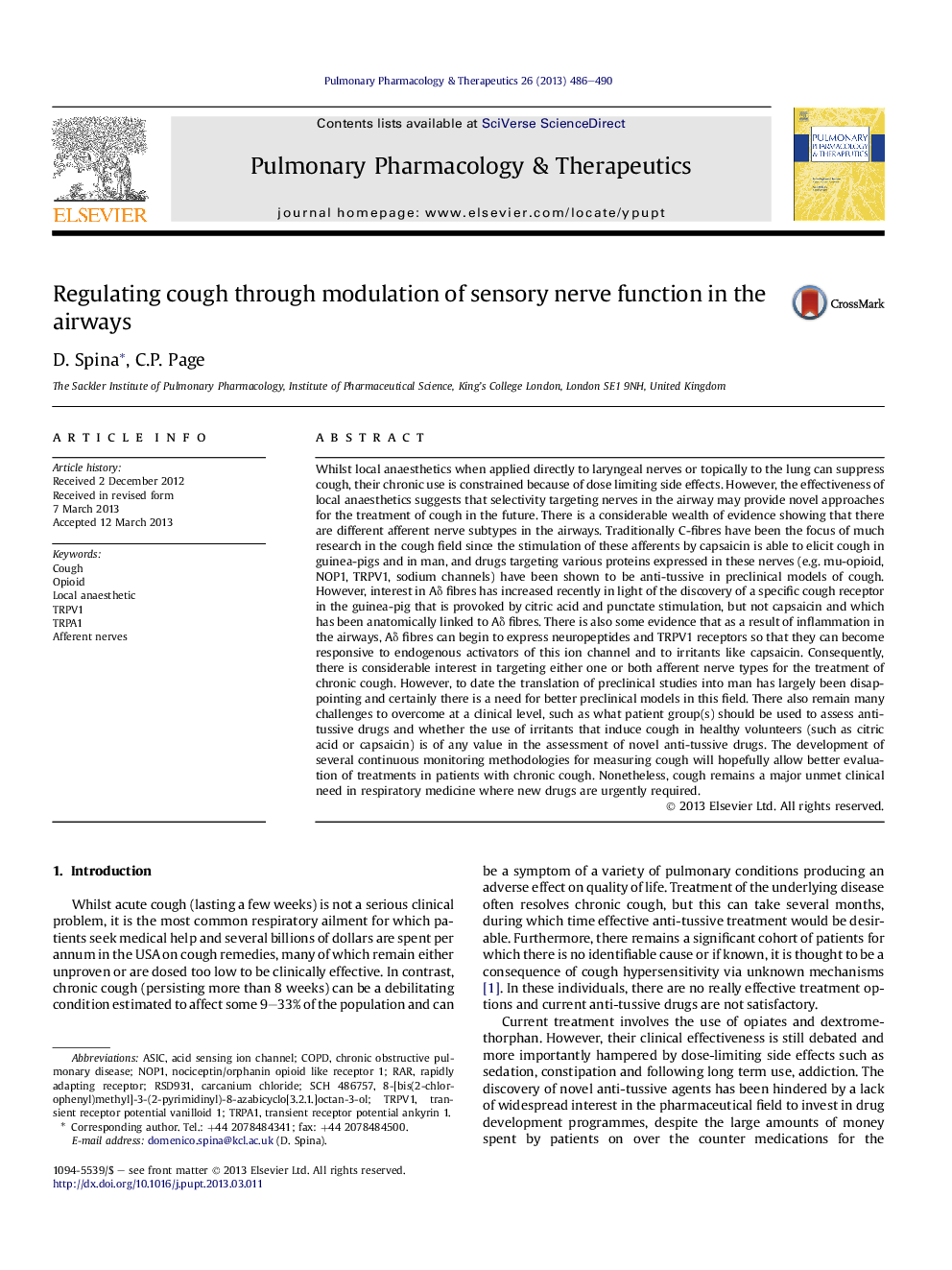| کد مقاله | کد نشریه | سال انتشار | مقاله انگلیسی | نسخه تمام متن |
|---|---|---|---|---|
| 5845777 | 1128314 | 2013 | 5 صفحه PDF | دانلود رایگان |
عنوان انگلیسی مقاله ISI
Regulating cough through modulation of sensory nerve function in the airways
ترجمه فارسی عنوان
تنظیم سرفه از طریق مدولاسیون عملکرد عصبی حسی در راه های هوایی
دانلود مقاله + سفارش ترجمه
دانلود مقاله ISI انگلیسی
رایگان برای ایرانیان
کلمات کلیدی
TRPA1TRPV1ASICRAROpioid - opioidacid sensing ion channel - اسید سنجش کانال یونLocal anaesthetic - بیحسی موضعیCOPD - بیماری مزمن انسدادی ریهChronic obstructive pulmonary disease - بیماری مزمن انسدادی ریهCough - سرفهafferent nerves - عصب اعصابTransient receptor potential vanilloid 1 - پتانسیل گیرنده گذرا وانیلیوئید 1Rapidly adapting receptor - گیرنده سریع گیرنده
موضوعات مرتبط
علوم پزشکی و سلامت
پزشکی و دندانپزشکی
پزشکی ریوی و تنفسی
چکیده انگلیسی
Whilst local anaesthetics when applied directly to laryngeal nerves or topically to the lung can suppress cough, their chronic use is constrained because of dose limiting side effects. However, the effectiveness of local anaesthetics suggests that selectivity targeting nerves in the airway may provide novel approaches for the treatment of cough in the future. There is a considerable wealth of evidence showing that there are different afferent nerve subtypes in the airways. Traditionally C-fibres have been the focus of much research in the cough field since the stimulation of these afferents by capsaicin is able to elicit cough in guinea-pigs and in man, and drugs targeting various proteins expressed in these nerves (e.g. mu-opioid, NOP1, TRPV1, sodium channels) have been shown to be anti-tussive in preclinical models of cough. However, interest in Aδ fibres has increased recently in light of the discovery of a specific cough receptor in the guinea-pig that is provoked by citric acid and punctate stimulation, but not capsaicin and which has been anatomically linked to Aδ fibres. There is also some evidence that as a result of inflammation in the airways, Aδ fibres can begin to express neuropeptides and TRPV1 receptors so that they can become responsive to endogenous activators of this ion channel and to irritants like capsaicin. Consequently, there is considerable interest in targeting either one or both afferent nerve types for the treatment of chronic cough. However, to date the translation of preclinical studies into man has largely been disappointing and certainly there is a need for better preclinical models in this field. There also remain many challenges to overcome at a clinical level, such as what patient group(s) should be used to assess anti-tussive drugs and whether the use of irritants that induce cough in healthy volunteers (such as citric acid or capsaicin) is of any value in the assessment of novel anti-tussive drugs. The development of several continuous monitoring methodologies for measuring cough will hopefully allow better evaluation of treatments in patients with chronic cough. Nonetheless, cough remains a major unmet clinical need in respiratory medicine where new drugs are urgently required.
ناشر
Database: Elsevier - ScienceDirect (ساینس دایرکت)
Journal: Pulmonary Pharmacology & Therapeutics - Volume 26, Issue 5, October 2013, Pages 486-490
Journal: Pulmonary Pharmacology & Therapeutics - Volume 26, Issue 5, October 2013, Pages 486-490
نویسندگان
D. Spina, C.P. Page,
